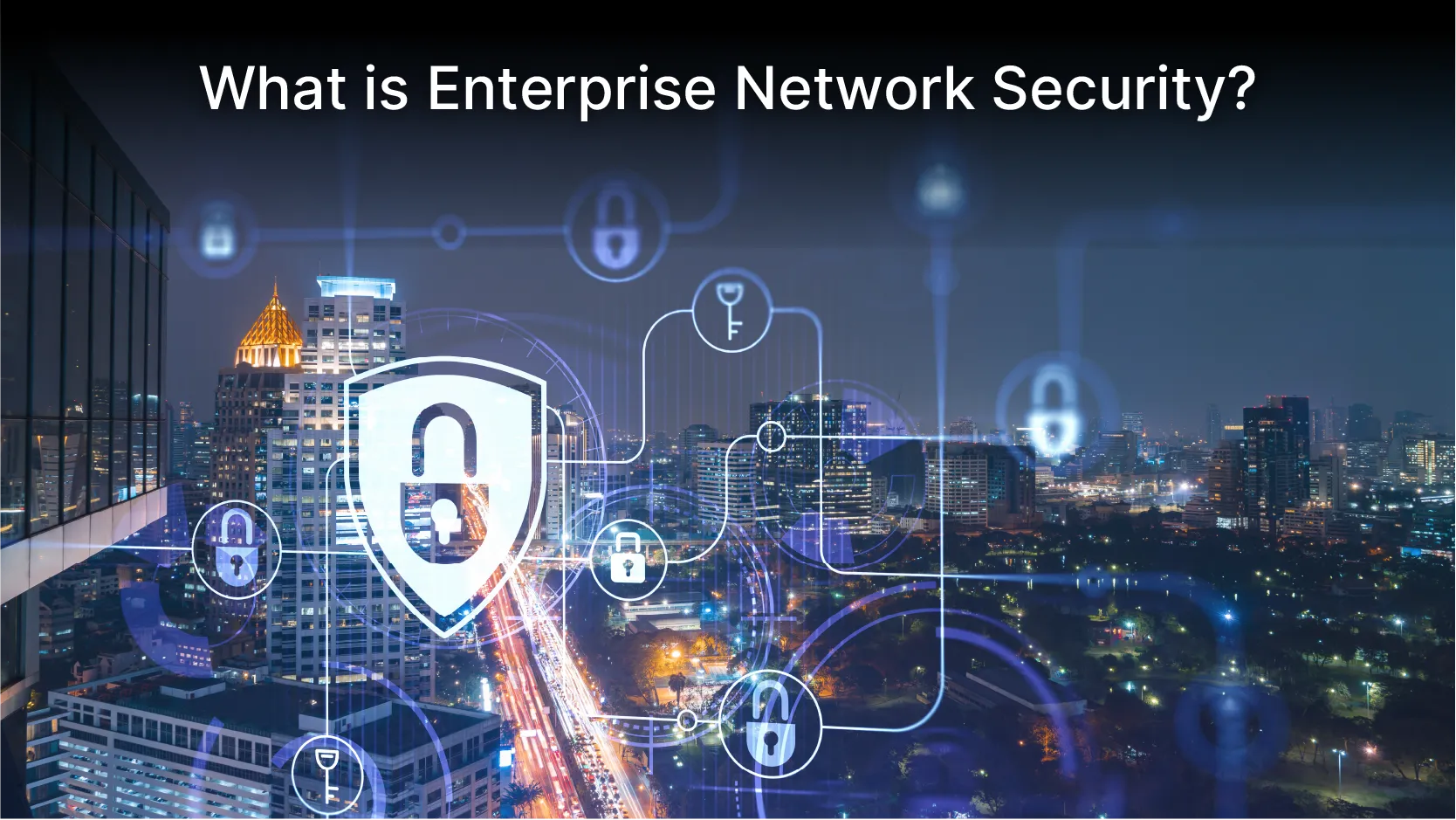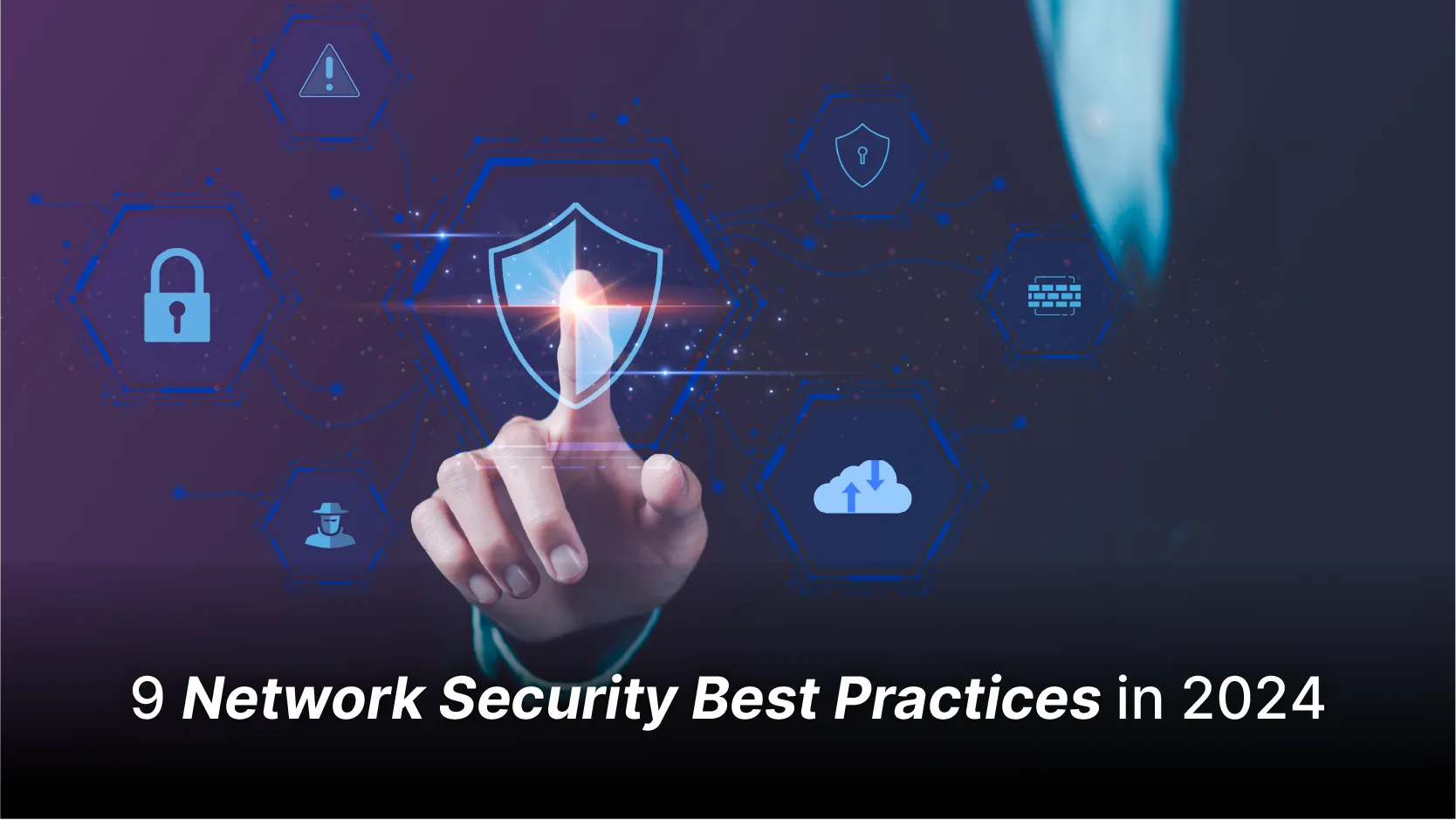Network security best practices encompass a range of strategies and techniques designed to protect sensitive data from unauthorized access and cyber threats. With the increasing sophistication of cyberattacks, organizations must proactively implement measures to defend their systems against vulnerabilities. This involves not only technological solutions but also employee training and policy development to create a comprehensive security framework. Let’s learn more about it.
What is Enterprise Network Security?

Enterprise network security refers to the comprehensive set of strategies and technologies employed by organizations to protect their network infrastructure from potential threats and cyberattacks. As businesses increasingly rely on digital systems and interconnected devices, the need for robust security measures has become paramount.
This security framework encompasses various components, including firewalls, intrusion detection systems, anti-malware solutions, and data loss prevention tools, all designed to safeguard sensitive information and maintain operational integrity.
Also Read: What is Cloud Security Posture Management (CSPM) and Why Is It Important in 2024?
9 Network Security Best Practices in 2024
 Let’s dive into some essential network security best practices every organization should implement to safeguard their digital infrastructure.
Let’s dive into some essential network security best practices every organization should implement to safeguard their digital infrastructure.
1. Perform a Comprehensive Network Audit
The initial step in securing any network devices is conducting a thorough audit to uncover potential weaknesses in their architecture and configuration. This audit should assess:
- Security Vulnerabilities: Identify existing gaps that could be exploited by malicious activity.
- Unused or Unnecessary Applications: Remove or disable applications that no longer serve a purpose to reduce the attack surface.
- Open Ports: Close unnecessary ports that could be entry points for attackers.
- Anti-virus/Anti-malware Presence: 4 billion malware infections occurred worldwide in 2022. Ensure all devices have up-to-date protection against malicious software.
- Backup Systems: Verify that backup procedures are in place and functioning correctly.
2. Deploy Network and Security Devices
Organizations must deploy key security devices to protect their networks effectively. These include:
- Firewalls and Web Application Firewalls (WAF): Essential for protecting websites from web-based attacks and safeguarding sensitive data.
- Intrusion Detection and Prevention Systems (IDS/IPS): Monitor and respond to suspicious activities within the network.
- Security Information and Event Management (SIEM): Centralizes the logging and monitoring of security events across the network.
- Data Loss Prevention (DLP) Software: Prevents sensitive information from being sent outside the network unauthorized.
These tools collectively help maintain optimal security and provide visibility into network traffic.
3. Disable File Sharing Features
While file sharing can be convenient, it poses significant security risks. It is advisable to enable file sharing only on specific, secure servers rather than across all employee devices. Limiting file sharing reduces the chances of unauthorized access or data leakage.
4. Regularly Update Antivirus and Anti-malware Software
Organizations often purchase devices with pre-installed security software but fail to keep them updated. Regular updates ensure that antivirus and anti-malware programs are equipped with the latest bug fixes and security patches, providing better protection against emerging threats.
5. Secure Your Routers
A security breach can occur if an attacker gains physical or remote access to a network router. This can cause monetary problems as well. The typical cost of a data breach is $4.45 million. To prevent this:
- Relocate Routers: Place routers in secure locations, such as locked rooms or closets, to limit physical access.
- Install Surveillance: Consider video surveillance in server rooms to monitor any unauthorized access attempts.
- Change Default Settings: Modify default passwords and network names, which are easily found online and exploited by attackers.
6. Use Private IP Addresses
Assigning private IP addresses to critical devices and servers helps prevent unauthorized access. This practice makes it easier for IT administrators to monitor and respond to suspicious activity from unauthorized users or devices attempting to connect to the network.
7. Establish a Network Security Maintenance System
A robust network security maintenance system is crucial for ongoing protection. This system should include:
- Regular Backups: Ensure data is regularly backed up and stored securely.
- Software Updates: Keep all software and security tools up to date.
- Scheduled Changes: Regularly update network names and passwords to prevent unauthorized access.
Documenting and sharing this maintenance plan with the team ensures that everyone is aware of the security protocols.
8. Network Segmentation and Segregation
Dividing the network into distinct trust zones through segmentation helps contain the spread of security incidents. If a breach occurs, segmentation limits the damage to only the affected segment, reducing the overall risk and impact.
9. Foster a Security-Centered Culture
Creating a culture that prioritizes security is critical. This involves:
- Training and Education: Regularly educating staff on network security best practices, the implications of lapses, and their role in maintaining security.
- Awareness: Ensuring employees understand the importance of protecting corporate networks and are vigilant in their daily activities.
A security-conscious workforce is an essential line of defense against potential threats.
Winding Up
Implementing network security best practices is essential for organizations striving to protect their digital assets and maintain the integrity of their systems. By adopting a multi-layered approach that includes regular updates, strong access controls, employee training, and robust monitoring, businesses can significantly reduce their vulnerability to cyber threats.
Additionally, fostering a culture of security awareness and preparedness ensures that all personnel understand their role in safeguarding the network. As cyber threats continue to evolve, staying informed about the latest security measures and adapting strategies accordingly will empower organizations to effectively defend against potential breaches and secure their critical information. Ultimately, prioritizing network security best practices not only protects data but also reinforces trust with clients and stakeholders in an increasingly interconnected world.
































